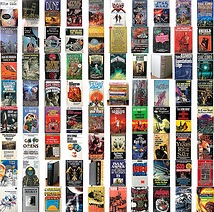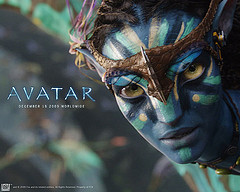If you have never attended the MLA or any other conference in the humanities, then you may not be aware that the traditional mode of presentations at these affairs is “slow reading.” That is, people sit at a skirted table and slowly read their papers to the audience.
Towards the end of my own academic career, I became frustrated with this mannered and boring format and vowed never again to read a paper at a conference (a vow I have kept, opting to “present,” rather than read).
With the MLA Convention in town, a friend on Facebook was lamenting the persistence of this practice and wrote, “I only wonder sometimes if the slow-motion paper reading isn’t analogous to the glacial change we’re enacting for the students.”
What connects this stilted method of recitation and the glacial pace of institutional change, particularly in the humanities, is a shared temporal horizon. Academic time is cyclical, seasonal and mythic. It’s a pastoral time, following the rhythm of the harvest, on the one hand, but also a timeless, monastic time in which scholars toil insulated from the hectic pace of the secular world.
Scholarly work relying on immersion in texts, contemplative reflection and artful writing seems to require solitude and a remove from the world. The academic institution, however, needs to engage with the world in order to maintain itself and thus enable and support such remove.
The challenge faced by the humanities lies in reconciling this circular time, this time beyond time, with the restless, linear time of the outside world—for that time, is the time of change.
A friend pointed out that the most effective posts on this blog are the shortest.
I’ve just finished reading a book.
One line—”Now James felt as if his head had been chopped off and thrown in boiling water.”—made me burst out laughing.
Another two—”Courage is action. Thought is cowardice.”—made me burst into tears.
There is much more in this book than these few lines.
And a hopeful broken-heartedness about the whole thing.
“Um über die nachträgliche Abspannung der Nerven hinwegzukommen habe ich leider wieder zum Chloroform meine Zuflucht genommen. Die Wirkung war furchtbar.” – Georg Trakl, 1905
I’ve begun to re-immerse myself in the intricate and densely overwrought sprawl of Pynchon’s masterwork. I first read it some 28 years ago and must declare that it remains, then as now, worthy of my idolatrous devotion.
20th Century literature begins with Ulysses and ends with Gravity’s Rainbow. The rest is either commentary or reaction.
 Phil Johnson has an ad agency (PJA) and also likes to read books. One day I asked him if he ever read science fiction and he said he didn’t. He asked me then to assemble a list of science fiction books I would recommend. I agreed to do so but thought, “Why should this list just sit in Phil’s inbox? Why don’t I, in fact, share it with the world via this worldwide, web-like platform I normally use for blogging about atheism, communism, and heavy metal?”
Phil Johnson has an ad agency (PJA) and also likes to read books. One day I asked him if he ever read science fiction and he said he didn’t. He asked me then to assemble a list of science fiction books I would recommend. I agreed to do so but thought, “Why should this list just sit in Phil’s inbox? Why don’t I, in fact, share it with the world via this worldwide, web-like platform I normally use for blogging about atheism, communism, and heavy metal?”
I’m no science fiction fanatic, and there’s probably a ton of great stuff out there that I’ve never even heard of (if you think so, PLEASE leave suggestions in the comments!), but this is the list I put together for Phil with the understanding that he has not even read some of the “classics”.
- Do Androids Dream of Electric Sheep? – The book upon which Blade Runner was based, of course, though much more engaging, involved, and philosophical than the film. It also contains at least one passage that, I believe, induces a palpable experience of existential vertigo. Watch out!
- Spaceman Blues: A Love Story – Brian Francis Slattery’s relatively recent vignette hits you with a heady melange of beat prose, hard-boiled pacing, and an undying love of New York City. It also depicts the banal horror of alien conquest.
- Dune – Speaking of melange, I was surprised to learn that Phil had never read this. The epic weirdness of David Lynch’s movie version aside, this novel is a virtuosic display of world-crafting that functions as political allegory, alternative history, and mystic tome.
- Neuromancer – William Gibson is a reserved—at times almost austere—stylist with a keen eye for future probabilities and a good record collection. Oh, and he coined the term “cyberspace”. One of his most recent books, Pattern Recognition, was about marketing.
- Schismatrix – I read this right after I read Neuromancer and thought that it actually contained more interesting ideas about social evolution, humanoid psychology, and the polymorphy of culture. If you like hallucinogenic drugs and societies built around the practice of sewing, you’ll love this.
- The Three Stigmata of Palmer Eldritch – Speaking of hallucinogens, Philip K. Dick’s novel about the extreme ennui experienced by space colonists, their flight into a world of Barbie dolls and pharmaceuticals, and the appearance of drug-peddling cyber-god works both as a parable of the 60s and a prophecy for the future.
- Radio Free Albemuth – This is the last Philip K. Dick novel I’m going to recommend but, in many ways, it is the best written (possibly because it was published posthumously and bears the trace of careful editing?). Dick had a religious experience in 1974 that obsessed him until his death. He wrote a lengthy exegesis of this experience and incorporated many of its details into his later novels (Valis, The Divine Invasion, Flow My Tears). It plays a central role in this novel as well but is handled in a more human, and less cartoony, way.
- The Deathworms of Kratos – This was Book 1 in a series called “The Expendables” (I also read The Rings of Tantalus). It is totally adolescent science fiction that made a big impression on me when I read it in seventh or eighth grade. The lesson here isn’t that this is a great book; the lesson is that, with science fiction, sometimes you just have to pick up a book because it has a cool cover or weird title and start reading (that is in fact what I did with Spaceman Blues above).
- The Alegebraist – This guy Iain Banks (or Iain M. Banks) is prolific and a very solid writer except that he sometimes gets too many plot threads cooking for his own good. This book definitely suffers from that but the weaknesses in plotting are more than made-up-for by the phantasmagoria of worlds, beings, and circumstances Banks conjures.
- A Deepness in the Sky – Vernor Vinge is the guy who invented “The Singularity” and he’s written a bunch of cool science fiction novels. Some may argue that this book’s predecessor, A Fire Upon the Deep, is better, but this creepy, slow-burning study of intergalactic colonialism, mind control, and revolt has stuck with me much longer.
I could recommend a bunch more, but that’s enough for now. Like I said, if you’re reading this and got something to add, go for it!
Image Source: th3ph17.
I spend more time tending my Twitter garden than I do planting bulbs here in my own backyard.
To remedy this, I’m attempting a little cross-pollination and invite you, dear reader, to drink deep from my Twitter well. Just look at the precious coins I’ve tossed therein:
- “How to Train Your Girl with a Dragon Tattoo” #ijustsaw Sat May 1 22:38:34 2010
- I just realized: Plaid is the new paisley 10:35 PM Feb 4th
- i think i crashed Google. #sorry! Wed Feb 10 23:25:44 2010
- It started with a shout-out, and ended in a shoot-out Mon Feb 22 14:24:43 2010
- um, because you’re psychotic? RT @warrenellis: I do not understand why I have not been approached to run the UK Space Agency. Tue Mar 23 12:55:30 2010
- @tallbonez I like wearing hash browns too but they leave grease and ketchup stains everywhere I sit Wed Mar 24 08:42:07 2010
- Are humans the only species with the proven ability and willingness to hunt other species to extinction? #justcurious Sat Apr 10 09:57:35 2010
- Don’t hate the player, hate the instrument Sat Apr 10 19:34:31 2010
- “divine” is just another way of saying “inhuman” Tue Apr 20 08:37:22 2010
- I wanna be part of a global teeny-bopper trend I don’t understand! “Older Girl, You’re So Pretty” – #happy700thdayshinee Sat Apr 24 10:10:06 2010
- Somebody asked me for a “realistic estimate” of when I could do something. I told him, “Realism isn’t exactly my bag.” Fri Apr 30 11:31:33 2010
- If you’re trying to figure out if something is a good sign or not, it’s probably a bad sign. Sat May 1 22:39:47 2010
- I knew the focus on ROI was just a fad: http://adage.com/agencynews/article?article_id=143644 Mon May 3 09:12:22 2010
- Maybe global warming is just God’s way of boiling the ocean. Tue May 4 06:42:41 2010
- As anyone ever actually said, “Here, let me Bing that for you?” I thought not. Tue May 4 07:15:36 2010
- People always say “re-invent” yourself. Is this tacit acknowledgment that we are inventions to begin with? Tue May 18 09:52:32 2010
- I have nothing to add to the “conversation.” Pls RT Fri May 28 16:07:18 2010
- The remarkable power and portability of some euphemisms: People say “I have to go to the bathroom” even when they’re out in the woods. Tue Jun 1 17:14:01 2010
- Some complain about our growing inability to read anything of length online. What do they expect from people using “browsers”? Thu Jun 10 23:55:07 2010
- Hemingway called the blank page “The Great White Bull” – Does that make Twitter’s “What’s happening?” box “The Little White Bull”? Thu Jun 17 22:44:12 2010
- The hint of androgyny that suggests a kind of decadent villainy in American popular culture. Tue Jun 22 14:43:53 2010
- The lump on his neck pulsated as though it were full of bees. Tue Jun 22 15:32:16 2010
- Sea-foam on beach-breaking waves always seems to be galloping to boil and feather on the shore. Thu Jun 24 12:58:42 2010
- Every life is a word and every horoscope it’s false etymology. Fri Jun 25 09:30:58 2010
- Backlit leaves, sunlit ghosts Fri Jun 25 14:11:21 2010
- The real question is, “Wozu Twitter in dürftiger Zeit?” Fri Jun 25 14:49:30 2010
- The truth will set you free, but first it will make you throw up. Tue Jun 29 10:02:20 2010
- “The only thing our society rewards is potential. Accomplishment actually counts against you” Mon Jul 12 09:34:56 2010
- One sip of Pilsener Urquell and I’m back in Mittteleuropa. This beer is my Proustian madeleine. Mon Jul 12 23:46:09 2010
- “403 Forbidden: The server understood the request, but is refusing to fulfill it.” – Servers are basically like teenagers Wed Jul 14 11:09:07 2010
- Me: Listening to Jimi Hendrix makes me want to get a Stratocaster. My friend: It makes me want to get a hooker. Thu Jul 15 20:41:03 2010
- I wish I got “Frenemy” requests on Facebook. Sat Jul 24 15:18:02 2010
- We need WikiDepends to prevent WikiLeaks Mon Jul 26 13:18:35 2010
- I’ve never counted my chickens before they hatched, but I have counted them right before they got gobbled up by the fox 4:32 PM Feb 1st
- I think I may have just violated the Prime Directive. 11:18 PM Jan 21st
- When I grow up, I want to be an unindicted co-conspirator. Mon Jan 11 12:27:05 2010
- OMG! LOL! WTF? 10:07 AM Jan 5th
- EYE OF THE TIGER!!!!! 2:27 PM Dec 17th, 2009
Pretty good, right?
There are many reasons why my academic career didn’t pan out, but among them is undoubtedly the fact that I didn’t publish very much. For example, I never turned my dissertation on the Baader-Meinhof Gang into a book (though part of my research did end up in an obscure, Canadian journal called, Border/Lines).
When I did publish, it was essays like this one on the politics of gangsta rap.
Now, of course, I “publish” pretty much every day!
Life is so strange.
 I’m in the middle of a bunch of projects right now.
I’m in the middle of a bunch of projects right now.
One project has me writing about security in the cloud.
Apparently, security concerns are one major obstacle to adoption of the cloud, in spite of the many advantages this computing model offers. My client is trying to change all that.
Another project has me mapping out a strategy for a blog focused on outsourced (sometimes called “offshore”) product development (OPD).
While the offshoring of IT services is hardly new, for the last several years we’ve seen outsourcing move up the value chain to include what were once considered core functions like R&D and new product development. As you might imagine, there are myriad challenges associated with this approach. My client is trying to solve (some of) them.
In addition to the above, I’m doing content strategy (“what kind of content do you need to generate leads, close sales, and improve search rank?”) and development (actually producing the stuff) for an array of B2B firms.
Bigger-picture-wise, I’m exploring various business models for content marketing services. If you’ve got ideas about that, let me hear ’em!
PS. The title question of this post was posed by Irini Galliulin to Ensign Chekhov in the classic Star Trek episode, “Way to Eden”
Image Courtesy of Dollie_Mixtures.
Reading two NYT articles today reminded me of how much fun with similes writers over there can have.
First, in “The Great Unalignment,” writer Matt Bai says that, in the aftermath of Scott Brown’s Senate victory here in Masschusetts, Democratic talk of “a great liberal realignment seems as retro as Friendster.”
While I don’t exactly consider Friendster retro – it’s hardly Pong – I’ve always said, “Retro is the new cutting edge.”
Second, in a review of Charles Pellegrino’s The Last Train from Hiroshima, Dwight Garner writes, “Mr. Pellegrino follows his survivors as they trudge through wastelands that make ‘The Road’ by Cormac McCarthy read like ‘Goodnight, Moon.'”
Of course, that just got me thinking about how well “The Road” would go over as a bedtime story: “Goodnight corpse. Goodnight air. Goodnight cannibals everywhere.”
 I saw Avatar yesterday and, well, you know.
I saw Avatar yesterday and, well, you know.
I thought it would have been so much better if they had discovered that the All-mother, Eywa, was actually an evil AI and the Na’vi people were really her slaves or her batteries, like in the Matrix, and that the “attack” by the “sky people” was actually created by her to punish them for something.
This would have also allowed for a Philip K. Dick-esque bending of reality/identity as Sully discovers that the woman he’s fallen in love with is actually an avatar, that all the soldiers and scientists and corporate flacks from Earth are avatars, and that, in fact, he is an avatar as well!
On another note: SEO
I did a Google Image search for “Avatar” and, of course, mainly got pictures of Aang and his cohorts from Avatar: The Last Airbender, which first aired in 2005.
Just goes to show that half a billion dollars in production and advertising can’t turn back the accreted long tale of web content.
Or can it?
Image Courtesy of rxau.


